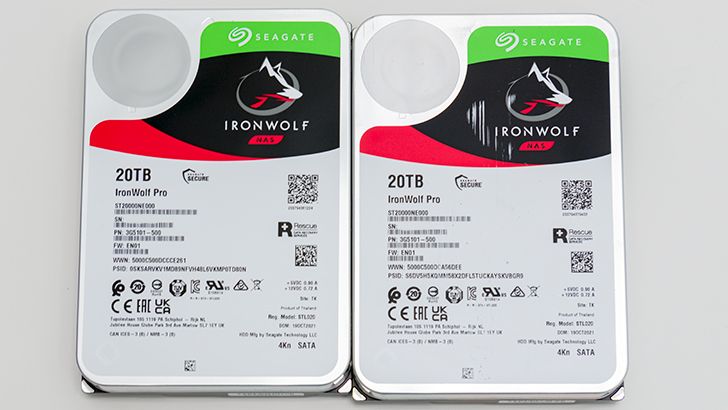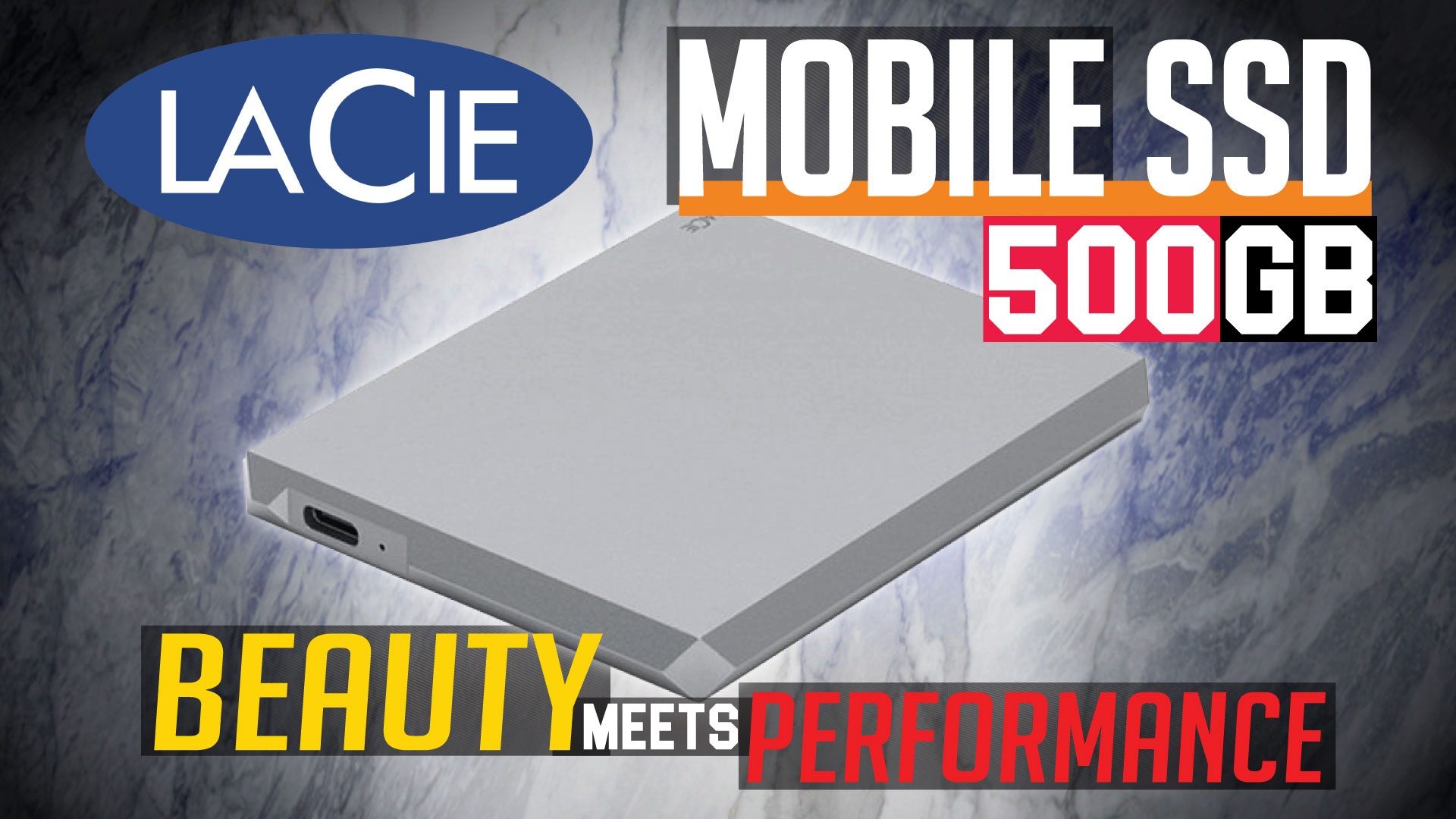
Much like the Exos X20 we recently looked at, those hoping for a massive change to the IronWolf Pro blueprint for the 20TB generation… well… they may be disappointed. Beyond tweaks to the MTC algorithms, denser platters, and slight changes to the PCB, not much has changed from one generation to the next. By the same token this can be considered not only a Good Thing™ but a Great Thing. While Heat Assisted Magnetic Recording is the new sexy it is by very definition new. New without a proven track record. So, while MC HAMMER is still in retirement and Seagate’s take on HAMR/EAMR is still “Coming Soon” this means the IronWolf Pro 20TB can be considered a bigger, faster, stronger version of its predecessors. One that you will know how it will react in all scenarios. It just will be faster, and stay faster, than its smaller siblings.

To be fair, the IronWolf Pro 20TB exterior does share more in common with the Exos X20 than the IronWolf 18TB. The new chassis and PCB design are rather attractive and attention getting. Beyond aesthetics the PCB is the same as the Exos X20 with the same RAM, same controller, and very similar vibration sensors (albeit scaled down a tad). All Seagate does differently for the X20 is add more vibration sensors and load a different firmware for the controller (and then test the hell out of them before they leave the factory floor). We have zero issues with this as it is a big reason for the IronWolf Pro’s success – same great taste as the Exos X series just easier on the pocketbook.

Internally the same is also true, with (basically) the same read/write hardware carried over from the Exos X20. Though here the same can be said of the IronWolf Pro 20TB vs 18TB. This means a dual r/w head configuration with a ‘detector’ signal processor in between the main drive controller and the read/write heads in what Seagate calls their Two-Dimensional Magnetic Recording (TDMR) technology.
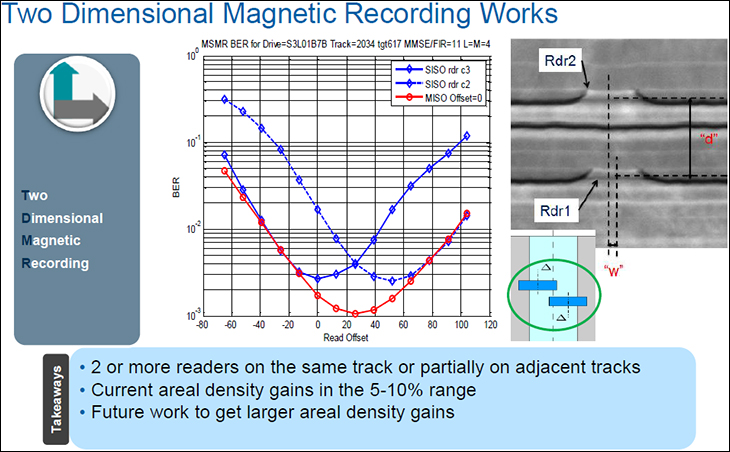
What TDMR basically means is this drive uses a dual r/w head configuration with a ‘detector’ signal processor in between the main drive controller and the read/write heads. The two heads are slightly offset with one read head over the central track being read and partially over the track ‘above’ it, and the second read head offset so it too covers the central track but also the one ‘below’ it. This allows for a more sensitive read on a given bit, allows for eliminating the interference from the bits surrounding the actual bit being read, and generally improves the signal to noise ratio (aka SNR which is the main culprit of false errors). It also gives the drive controller two chances of reading the bit properly for a single pass.
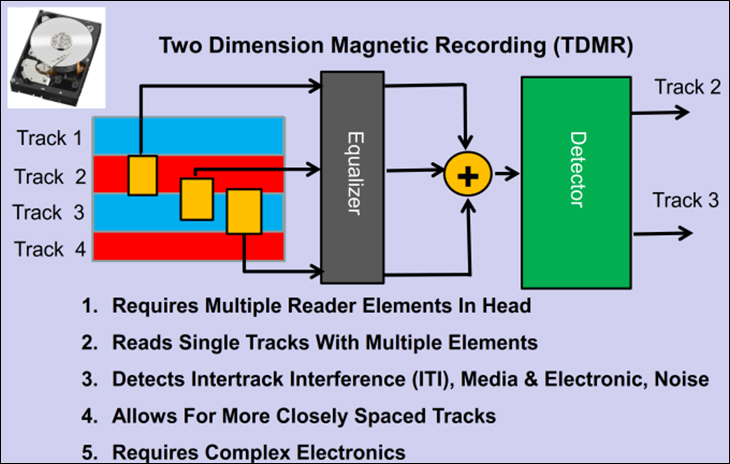
This TDMR tech works and works amazingly well. In talks with sources in Seagate the reason for the lack of ‘major improvements’ in TDMR between the 18TB and 20TB versions is because TDMR was overbuilt for 1.8 and even 2.0TB platters. It was designed with even denser platters than 2.22TB in mind. Thus, even with whopping 2.22TB platters(!) this setup is more than up to the task of ensuring a 0 is a zero and a 1 is indeed a one. To be fair even more improvements from the experience from gen 1 TDMR (16TB gen) and gen 2 TDMR (18TB) has been baked into the low-level algorithms that control the detector signal processor, so it is not just a recycling of older technology.
In either case it is the reason why the workload rating (300TB per year), MTBF (1.2M), and maximum non-recoverable read error rating of 1 per 10E15 bits (aka .125 Petabytes) read has not changed. While we did, and do, take issue with the non-recoverable read error rating staying the same as the smaller IronWolf Pro 18TB… and 16TB(…etc.) it still is 125Terabytes of reads. For home consumer, SOHO, and even typical SMB NAS appliance/server a bit over six full drive reads before a single bit error happens is more than ‘good enough’. A mere 2.4bits worth of errors per year is pretty much a nothing burger for any RAID ECC to handle. It is however a missed opportunity and a bit puzzling. Seagate should be all over the fact that their IronWolf Pro 20TB is the safe choice with proven reliability compared to the EAMR based competition, and yet this obvious reduction in number of full drive reads before an error is expected does not give that warm and fuzzy feeling it should.
On the positive side the detector signal processor’s algorithms are not the only low-level improvements baked into the IronWolf Pro 20TB. Much like the Exos X20, the IronWolf Pro 20TB’s MTC algorithms have been improved. In testing the results are impressive and the IronWolf Pro 20TB has razor sharp algorithms that are tailor made for both home users looking for a ‘D’ drive (i.e. low queue depth performance) and NAS appliance (and server) users in home, SOHO, or even SMB scenarios (medium queue depths). Basically, the IronWolf Pro excels at low to moderate queue depth scenarios and sometimes can even outmuscles the Exos X20 in shear performance. For instance, at queue depth of 1 the read and write performance of the IronWolf Pro 20TB is (slightly) better than the X20. How good? It starts stays above 250 mb/s to the 6TB mark (read is slight faster than write). Hits at or above 200MB/s out past the 13.75TB mark. Still clocks in at 150MB/s or better to the 18TB mark… and only drops down to smidgen over 125MB/s when entirely filled. More importantly, at medium to small file performance the r/w performance is head-to-head with the Exos X20. Put another way the IronWolf Pro 20TB is noticeably superior to the IronWolf 18TB.

The only downside to the new and improved algorithms is that while shear brute force makes it a great choice for home users looking for one drive that self-same firmware is heavily optimized for RAID. ERC (Error Recovery Control… or what WD calls TLER/Time Limited Error Recovery) is still in full effect with no easy way to disable it. In the 16TB and even 18TB generations we did not have too much of a problem with lack of easy ERC tweaking… as the ‘Cuda and ‘Cuda Pro were legit options. Since IronWolf/IronWolf Pro has basically killed the BarraCuda lines Seagate really, really needs to bring back ERC on/off tweaking to make the IronWolf Pro line optimal for both home and work scenarios.
We say this as ERC means that the IronWolf Pro drives will spend less time on ECC error recovery before giving up and marking a ‘bad’ block as uncorrectable versus what a 20TB BarraCuda Pro would. This is fine in a NAS appliance/server or when the drive is in a RAID array… as the RAID controller will be faster at recovery anyways. In a PC without RAID parity stripe(s) to fall back on when a ‘bad’ bit/block/etc. is encountered the internal ECC and controller will work for about 8’ish seconds then will give up and mark it as a corrupted bit. If/when this happens the OS typically pitches a fit and marks an entire file as corrupt. That is not a Good Thing™.
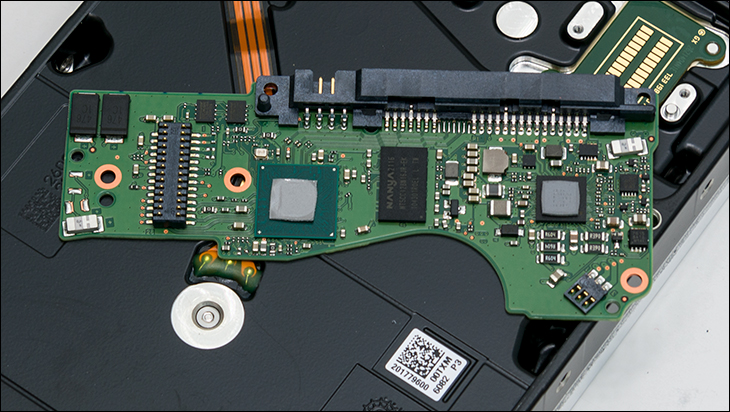
Thankfully, 8 seconds is a long time for a modern HDD controller to work the problem. Generally speaking if it cannot fix it in a couple seconds the chances of it ever fixing it are low. This is why RAID controllers rarely bother with letting the drive’s controller and drive level ECC deal with it for longer than a couple seconds (and why limited ERC came about in the first place). Instead, they almost invariably move to the RAID parity stripe and its ECC to recover it when asked to do such a thing. Since you will not have that parity stripe(s) to fall back on, keep a second copy of anything important on the drive somewhere else. Preferably in a grandfather/father/son backup routine and another copy on your NAS… just as you should be doing already with any important data. After all, if a file is important enough to make you see red if it becomes corrupted it is important enough to be backed up in multiple locations. That is the optimal answer to concerns over ERC/TLER… and quite honestly is going to be a non-issue for the vast majority of people and drives used in a home environment. It just is something that Seagate could easily fix with a simple tweak to SeaTools and their firmware. Hopefully, soon.
Overall, the IronWolf Pro 20TB may not be a groundbreaking drive… but it doesn’t need to be. This new generation is a razor-sharp refinement on a series that was already extremely good at wide variety of tasks. For most that is more than good enough, it is exactly what they want in a new generation.
